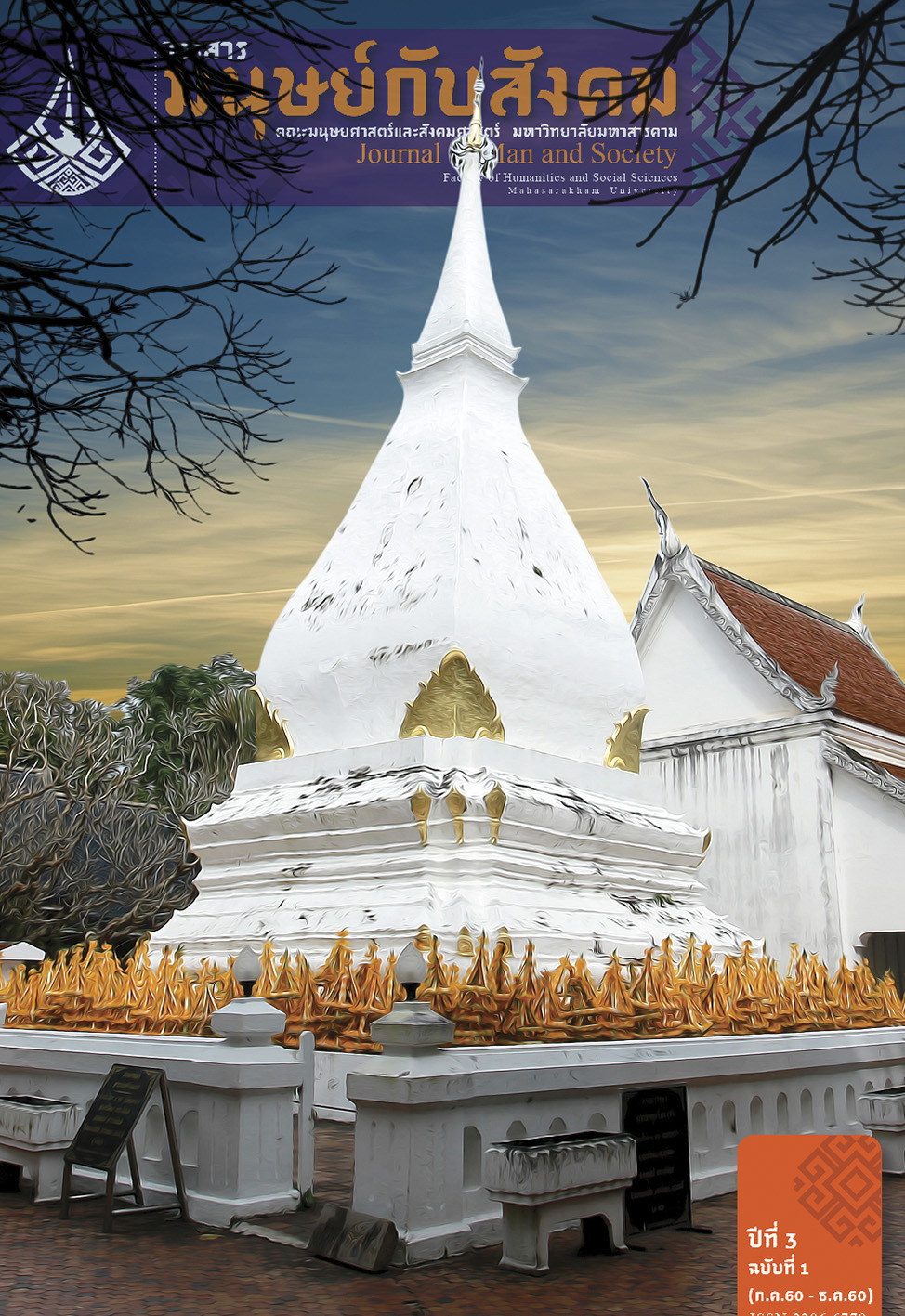Participation Building Processin conservation and restoration of religious building and Buddhist art in the flooding area of KhonKaen Province
Main Article Content
Abstract
This article was organized by studying and collecting data from the project of participatory religious building and Buddhist art in the flooding area of KhonKaen Province. It aimed to analyze, synthesize, and reflect both of information and body of knowledge for those who were interested in for applying as guidelines for developing the participation in conservation as well as restoration of participatory religious building and Buddhist art in KhonKaen Province adequately. The major information was applied from project of participatory religious building and Buddhist art in theflooding area of KhonKaen Province including the research area as flooding area in 2011, from data base of Office of KhonKaen Provincial Disaster Prevention and Mitigation in 9 districts, 31 sub-districts. The guidelines for developing the participation in conservation and restoration of religious building and Buddhist art in the flooding
area of KhonKaenProvince, were as follows: According to the study found that most of the flooding area, was next to water origin. Consequently, the flood was often occurred. In addition, some areas were repeatedly flooded. Therefore, the restoration
plan should be participatory planning. In restoration for damaged situation, the community should play an important role in participatory restoration of community. The outside work units should play their roles in supporting and fulfilling the body of knowledge as well as process skill in restoration by developing 2 aspects of participation in implementation including: The development of participation in restoring the religious building and Buddhist art in both of public sector as well as local work
units including the Sub-district Administrative Organization, school, monk, artisan, scholar in community, and stakeholder. The development of participation in coping guidelines as well as preventing the flooding situation by community in order to lower
the damage of religious building and Buddhist art which had to be implemented in both of short and long period of time, and congruent with area situation and preventive coping. The community network should be developed for participatory prevention
and coping from the upstream, midstream, and downstream. Furthermore, the alarm system or quick connection in information technology, should be implemented.
Article Details

This work is licensed under a Creative Commons Attribution-NonCommercial-NoDerivatives 4.0 International License.
เนื้อหาและข้อมูลที่ตีพิมพ์ลงในวารสารมนุษย์กับสังคม ถือเป็นข้อคิดเห็นและความรับผิดชอบโดยตรงของผู้เขียนซึ่งกองบรรณาธิการวารสารไม่จำเป็นต้องเห็นด้วยหรือร่วมรับผิดชอบใดๆ
บทความ ข้อมูล เนื้อหา รูปภาพ ฯลฯ ที่ได้รับการตีพิมพ์ในวารสารมนุษย์กับสังคม ถือเป็นลิขสิทธิ์ของวารสาร หากบุคคลหรือหน่วยงานใดต้องการนำทั้งหมดหรือส่วนหนึ่งส่วนใดไปเผยแพร่ต่อต้องอ้างอิงวาสาร
References
กรมป้องกันและบรรเทาสาธารณภัย. (2553). รายงานสถานการณ์สาธารณภัย ประจำปี2553. กรุงเทพฯ: อำนวยการบรรเทาสาธารณภัย.
. (2554). รายงานสถานการณ์สาธารณภัย ประจำปี 2554. [ออนไลน์]. ได้จาก:http://www.prevent.80rider.com/index. php/2014-11-13-16-14-04/2014-11-13-16-19-52. [สืบค้นเมื่อ ตุลาคม 2559].
นิยม วงศ์พงษ์คำ และคณะ. (2556). โครงการการอนุรักษ์ฟื้นฟูศาสนคารและงานพุทธศิลป์แบบมีส่วนร่วมในพื้นที่ประสบอุทกภัยในจังหวัดขอนแก่น. กรุงเทพฯ:สำนักงานกองทุนสนับสนุนการสร้างเสริมสุขภาพ (สสส.).
ศูนย์ป้องกันวิกฤติน้ำ กรมทรัพยากรน้ำ. พื้นที่เสี่ยงอุทกภัย. [ออนไลน์]. ได้จาก: mekhala.dwr. go.th. [สืบค้นเมื่อ ตุลาคม 2559].


